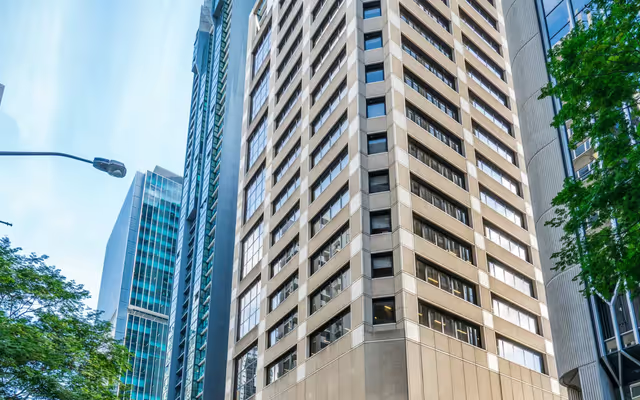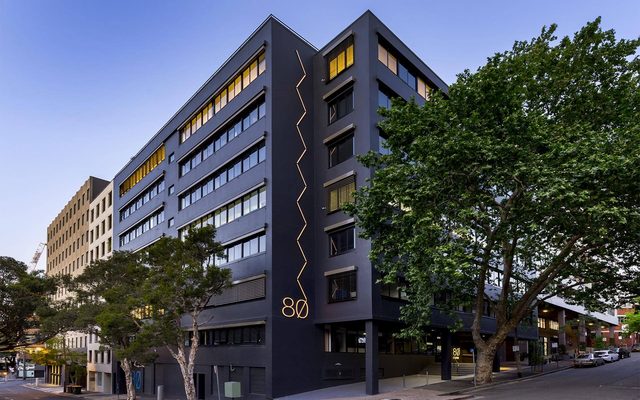This article is from the Australian Property Journal archive
COMMERCIAL real estate owner, manager and developer Investa is optimistic about Australia’s major CBD office markets in 2025, expecting both leasing and capital markets to improve in response to lower interest rates and supportive macroeconomic conditions.
The outlook comes at the end of a year that has seen the hefty downs revaluations of office buildings in response to shifts to hybrid works and a high cash rate materialise in key transactions. Major landlords such as Dexus and Mirvac have sold CBD and inner-city towers at hefty discounts to peak values.
“Australia’s major CBD office markets are showing signs of early cycle recovery, with both leasing and capital markets expected to improve through 2025,” Investa head of strategy and research David Cannington said in the Investa Inside office market outlook.
“Headwinds from the post-COVID work transition appear to be easing, as hybrid work patterns settle. Lower inflation and anticipated interest rate cuts will ease pressure on Australian business conditions.
“We expect macro conditions will support positive leasing demand and capital growth in the coming year.”
He said the Sydney CBD is “leading the pack” in terms of positive leasing demand and capital market activity. It has recorded the strongest 12-month period of transactions since 2021, with $3.1 billion in Sydney CBD office capital transactions reported in the three quarters to September, according to JLL. The rebound has continued into the current quarter, with transactions including BGO’s purchase of 10-20 Bond Street for around $580 million.
Other major office markets are at varying stages of cyclical recovery.
Cannington said the increased number of transactions has reflected stronger investor sentiment and firmer expectations of near-term cuts to interest rates and Australian bond yields.
However, with core inflation holding high, labour markets holding tight, and rising geopolitical risk, hopes for a rate cut early in the new year have been pushed back to the middle of 2025.
Cannington said that as the cyclical capital transactions market recovery experiences variable timing and strength across Australia’s office markets and asset types, Investa expects capital growth rates to also vary.
“A stronger capital appetite and increased competition for high quality Sydney CBD assets is driving more stable capital values across this segment of the market.”
Cap rates for Sydney CBD prime market assets have largely topped out, Investa believes, and will come under moderate downward pressure through 2025.
“In contrast, tentative investor sentiment and capital market pricing uncertainty remain ‘in play’ in Melbourne CBD due to recent increases in commercial property taxes combined with a softer leasing market outlook,” Cannington said.
“Accordingly, we forecast Melbourne CBD has at least another 12 months before prime office market cap rates start to compress (reflecting increasing capital values).”
Sydney CBD prime office capital returns are forecast to outperform throughout the cyclical recovery. Melbourne CBD prime market cap rates, meanwhile, are tipped to converge and more closely align with Australia’s other CBD markets through 2025 and beyond.
Macroeconomic conditions will also support further gains across office capital market transactions.
As inflation eases further, interest rate cuts are likely to support improved business conditions and tenant business expansion plans in 2025. New Australian CBD office supply will slow to its lowest annual level since 2018, increasing leasing market competition for “high-quality, well-located workplaces”.
“Lower interest rates and improved business conditions are expected to support office-based employment, with specialist business services and finance likely to lead the office-based business hiring recovery.
“With a number of Australian businesses, including significant employers across both of these sectors and others announcing expectations for office attendance through 2024 we expect the tenant market is entering the final phase of post-COVID hybrid tenant workspace adjustments.
“As we enter the sixth year since the beginning of the pandemic, we expect the headwinds on tenant leasing demand from hybrid work transitions will ease in the coming years.”
Investa’s office occupancy stabilised at 70% to 75% of pre-COVID levels through 2024, including peak day occupancy rates of 85% to 90% – up from 60% to 70% through 2023. This is the highest reading since the start of the pandemic and equates to approximately three-and-a-half to four days per week in the office on average across Australia’s major CBD office markets.
Investa said its office occupancy trends align with broader city-wide pedestrian activity and public transport usage data.
“Higher office occupancy in 2024 has reflected both a strong desire for office workers to work collaboratively in a physical office workspace and an increase in tenant businesses reporting office workplace attendance directives,” it said.
“More stable expectations of office attendance and reported occupancy rates have coincided with positive leasing demand (i.e. net absorption) and an uptick in Australian CBD prime market leased occupancy.”




